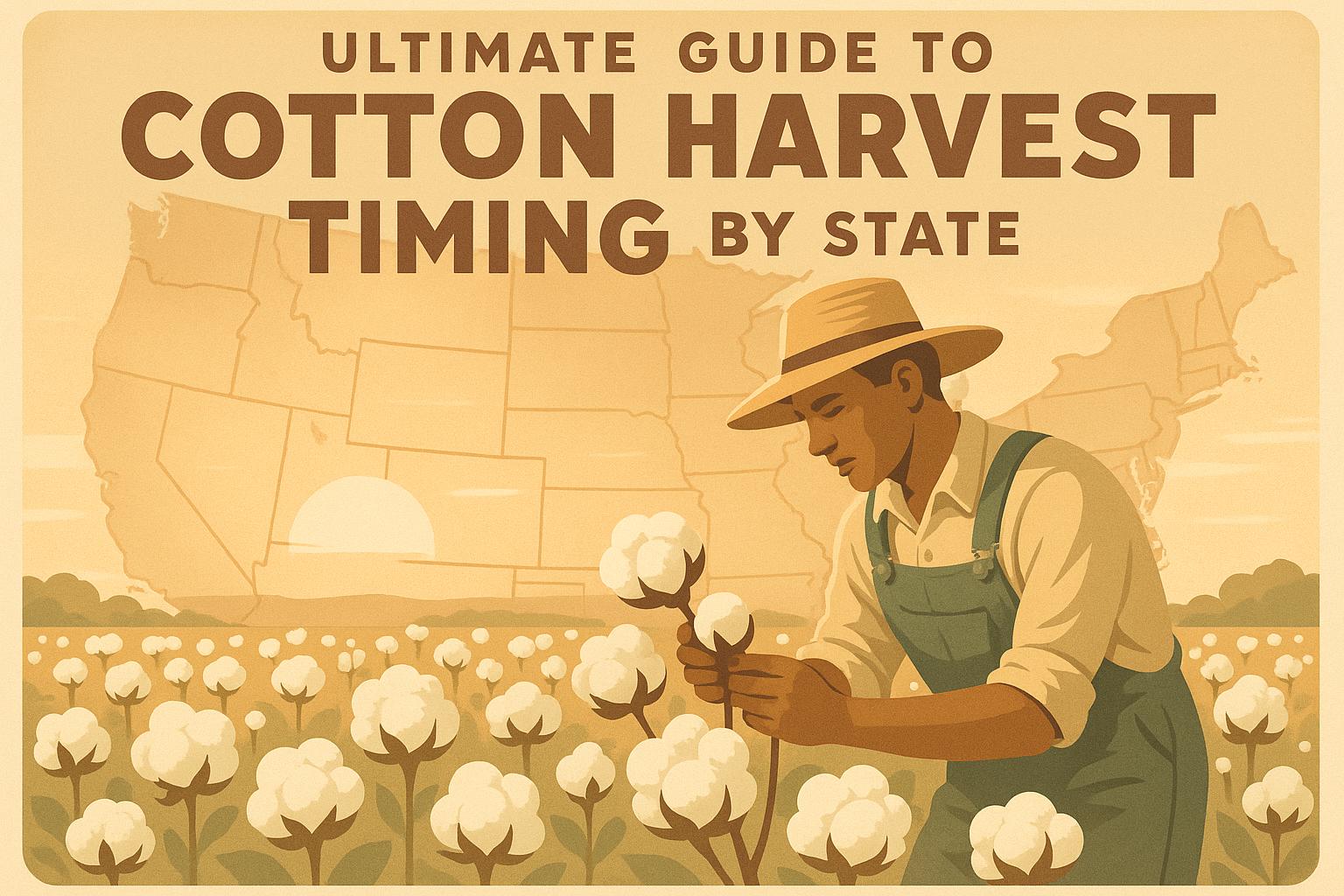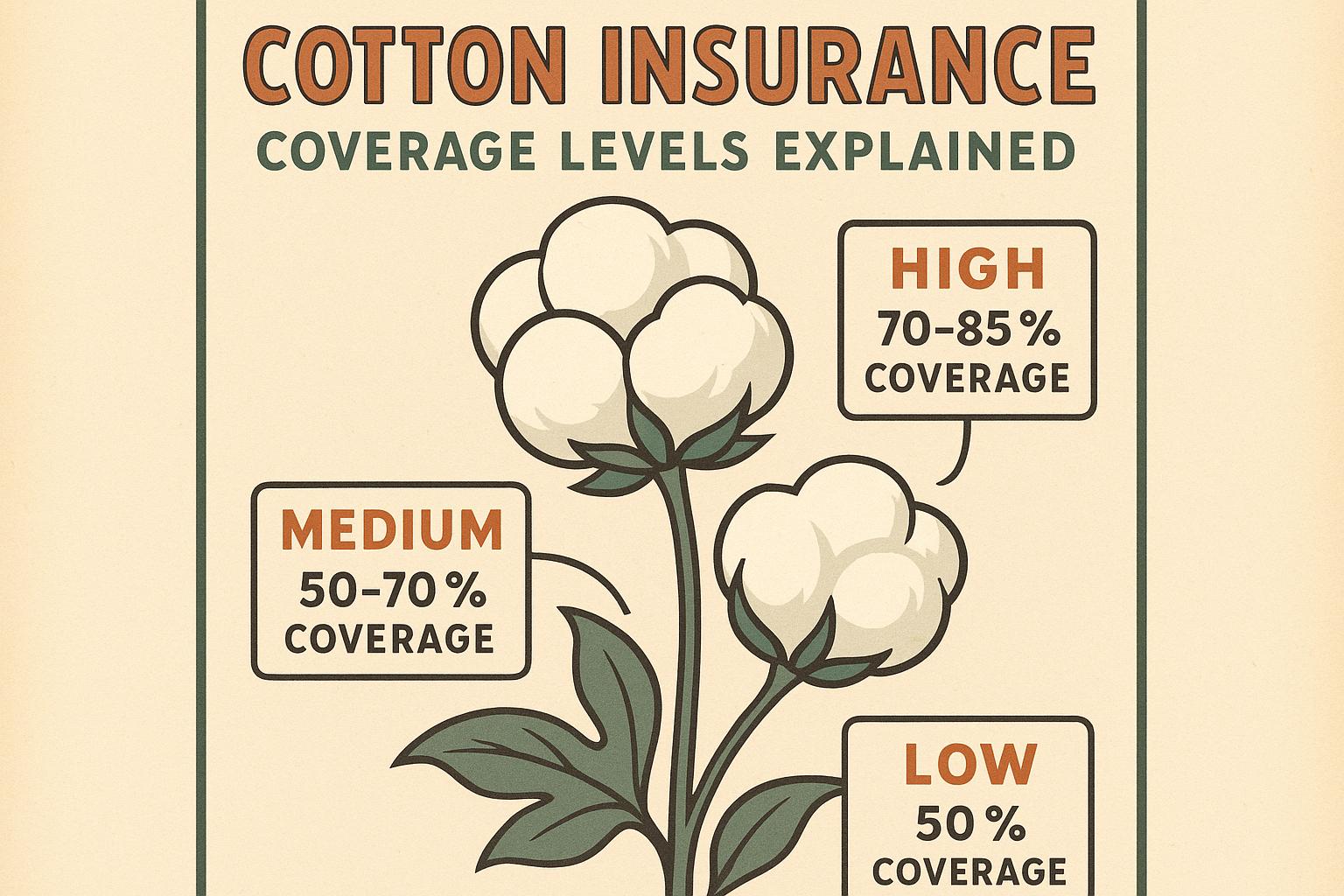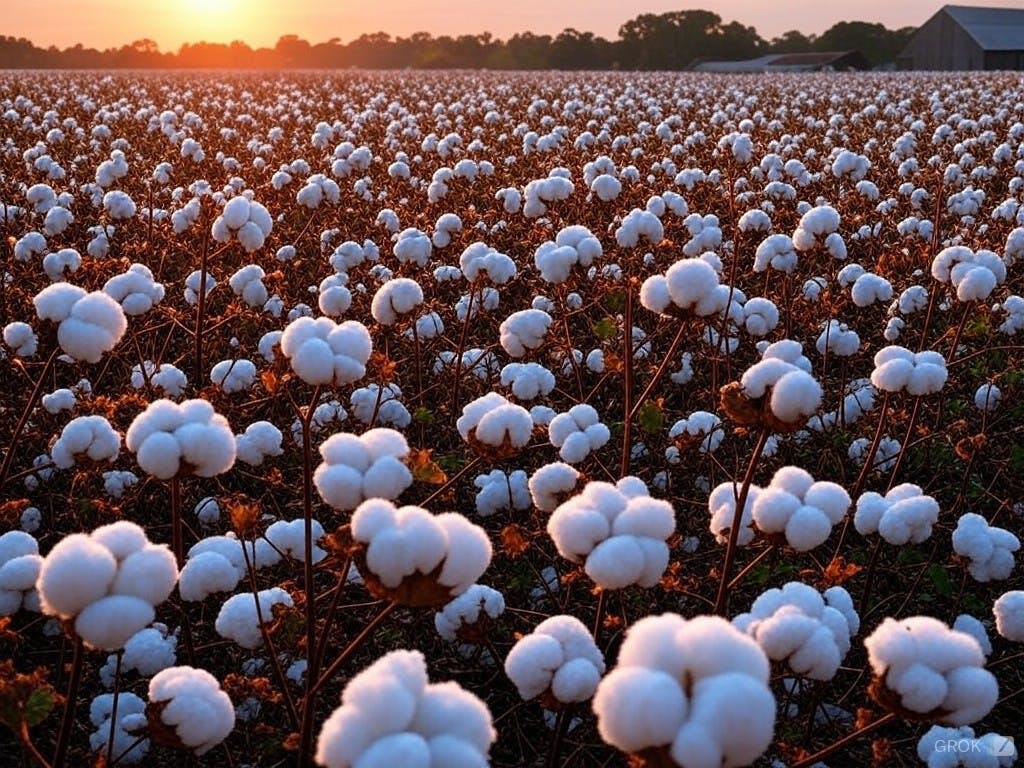Executive summary (TL;DR)
- Use advanced cotton yield estimation methods like NDVI from drones at bloom for 85-90% accuracy, forecasting yields 10-15% better than traditional counts to optimize harvest planning.
- Integrate tissue sampling with DD60 models mid-season; boosts precision 12-18% in variable fields, cutting over/under-estimates and improving input decisions.
- Leverage AI tools for boll mapping; it combines satellite data with ground truth for 20% tighter forecasts, turning estimates into profitable market strategies.
Related Post: For complementary tools, check out our post on Cotton Yield Calculator for Farmers.
I've estimated enough cotton yields over the years to know that getting it right isn't guesswork—it's the difference between selling forward at a premium or holding bales that underperform. You eyeball a field at bloom, factor in heat units, but miss a stress pocket, and your numbers are off by bales. For farmers with a decade of calling shots on contracts and inputs, advanced cotton yield estimation methods mean sharper forecasts, tighter margins, and decisions that pay off without hindsight regrets.
We're honing the toolkit here, assuming you've got your boll counts and heat units basics solid. This is about layering tech and data for precision, backed by extension trials from Texas A&M, Mississippi State, and Cotton Incorporated. I'll pull from those studies, share field-tested refinements, and outline the methods so you can upgrade your estimates for better planning. No overcomplication, just the approaches that deliver actionable numbers.
Why Accurate Yield Estimation Drives Your Bottom Line
Yield estimates aren't academic—they lock in sales, guide fert splits, and hedge risks. Underestimate, and you oversell; overestimate, and storage eats profits. Traditional hand counts hit 70-80% accuracy, but advanced methods push 85-95%, per NC State data, adding 5-10% to net returns through better marketing.
Cotton Incorporated surveys: Growers using tech estimate 15% tighter, cutting surprises. For your op, that's real cash—accurate forecasts, time-based locks when prices peak.
Key: Integrate multiple methods; no single method wins every field.
Boll Counting and Sampling: The Ground Truth Foundation
Start with boots in dirt—count bolls on 1/1000 acre plots, 10-20 spots/field at early boll. First-position retention of 60-80% signals a strong set.
Advance it: Tissue sampling at peak bloom (NAWF=5) for nutrient status—N 3-4%, K 2-3%. Arkansas trials: Tissue-correlated counts boost accuracy 10-12%.
Methods:
- Random sampling: GPS-mark plots; average boll/plant x population.
- Position mapping: Track 1st/2nd fruit for quality forecast.
Pro tip: App-log data; trends over years refine baselines.
Heat Unit Models: Timing Your Estimates
DD60s (base 60°F) track growth—500 from plant to square, 850 to open boll. Estimate: Bolls x weight (0.2-0.3 g/lock) adjusted for stage.
Advanced: Hybrid models with weather data—forecast stress impacts. Oklahoma State: DD60 + rainfall predicts 88% accuracy, 15% better than DD60 alone.
Use: Apps calculate; input local temps for field-specific.
Off-topic: Tie to market—accurate DD60 estimates time sales; hedge when models show early maturity in tight supplies.
Remote Sensing: Eyes in the Sky for Field-Wide Views
Drones or satellites with NDVI map vigor—greenness correlates to biomass, estimating yields 80-90% mid-season, per Kansas State.
How: Fly at bloom/poll; NDVI >0.6 signals high potential. Cotton Incorporated: Integrates with ground truth for 12% tighter forecasts.
Tools:
- Drones: $1K models with multispectral; map 100 acres/hour.
- Satellites: Free MODIS or paid Landsat for large ops.
California data: NDVI + machine learning hits 92% in irrigated cotton.
Pro tip: Calibrate with hand samples; zones with low NDVI get fert boosts.
AI and Machine Learning: The Next-Level Forecaster
AI crunches data—inputs DD60, NDVI, soil tests for predictions. Models like those from IBM Watson forecast 90-95% accuracy, outperforming 20% over traditional.
Advanced: Boll mapping apps count via image recognition; 85% precise in trials.
Mississippi State: AI with tissue/DD60 ups estimates 18%, reducing input waste 10%.
For you: Free tools like FarmBeats; paid for large-scale.
Soil and Nutrient Integration: Below-Ground Insights
Soil probes for moisture + nutrient maps refine estimates—low K drops fill 10%, per Georgia extension.
Method: Variable-rate sampling; correlate with yield history.
Advanced: Sensor networks real-time data; adjust for 15% better accuracy in variable soils.
Combining Methods: Hybrid Approaches for Precision
No silver bullet—layer boll counts with NDVI/DD60 for 92% accuracy, Texas A&M hybrids show.
Steps:
- Pre-bloom: DD60 baseline.
- Bloom: Tissue + drone.
- Late: AI refine.
Economics: Accurate estimates save $50-100/acre marketing/inputs; ROI 3:1 on tech.
Chart: Imagine bar graph—traditional 75%, hybrid 92% accuracy.
Off-topic: Business tool—use estimates for forward contracts; lock when models show high yields in low-stock markets.
Challenges: Weather Variables, Data Overload
Weather skews—drought drops 20%; use probabilistic models.
Overload? Apps consolidate; start small.
A Delta farm layered methods, hitting forecasts within 5%—sold forward confidently.
Wrapping the Estimation Edge
Advanced cotton yield estimation methods turn guesses into gold—sharper decisions, higher returns. Data's your ally; layer for the win.
Actionable Takeaways
- Use DD60 apps; estimate at 500 units per square.
- Drone NDVI mid-season; aim >0.6 for high potential.
- Tissue test bloom; N 3-4% target.
- Hybrid AI with ground; boost accuracy 15-20%.


